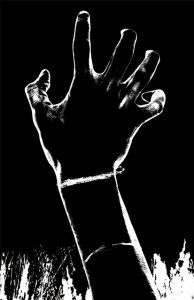Pumpkin carving, candy comas and spooktastic joy fill the entire month of October. Creepy decor gets dusted off and avid scare-enthusiasts go crazy in making their homes the most awesomely haunted locales on the block. But Halloween wasn’t always the time of ghouls and pumpkins we are familiar with now. Its origins span thousands of years, which means that the States were not the first place to have “Halloween.”

For the Celts 2,000 years ago, Nov. 1 marked the start of their new year. In order to prepare for this, the Celtic people put on an elaborate celebration leading up to the new year — meaning that Oct. 31 was their day of commemoration. According to history.com/topics/halloween the day before the new year, referred to as Samhain, was thought to be the time when the lines between the living and the dead blurred, and because the Celts believed that the otherworldly beings could be dangerous and ruin the crops of the season, they went to great lengths to honor them. To avoid angering the spirit world, the Celts would build bonfires and wear costumes while enjoying predicting each other’s fortunes.
Sadly for the Celts, the Romans eventually conquered the Celts, and the Romans had two festivals that incorporated the Celtics’ Samhain. Once again, the dead were commemorated in the Romans’ late October festival, which reflects the modern fascination with the dead similar to the long-standing Hispanic tradition of the Dia de los Muertos. The second October celebration honored the Roman goddess Pomona, which was combined more closely with the Celtic Samhain. From this celebration, modern-day Halloween got the idea for bobbing for apples, since Pomona was the deity of fruit and trees and her symbol was the apple. Although bobbing for apples seems like a fairly recent tradition, keep in mind that it is in fact thousands of years old.
When the Romans converted to Christianity and All Martyr’s Day was made more inclusive — it was expanded to include saints — the day was changed from May to Nov. 1. Following Nov. 1, Nov. 2 was deemed All Souls Day, which incorporated Celtic Samhain ideas, such as bonfires and dressing up in costumes — angels and devils were popular choices for people during this time. All Soul’s Day celebrated the dead similar to Samhain and the late-October Roman festival. The Catholic holiday was also called All-hallows and All-hallowmas, which gave the day before the title All-hallows Eve, the day that would eventually become Halloween.
Halloween might be a big affair in the U.S., but it wasn’t as popular when the colonies were first established. Due to strict Protestant religion, the October celebration was limited. Eventually in places like Maryland, the mix between Native Americans and the colonists created a new version of Halloween. Celebratory parties began to emerge in order to bring in the harvest. These celebrations also spanned the start of storytelling about the dead and the Celtic tradition of fortune telling.
Fall festivals became traditional aspects of the American Halloween culture, but Halloween had not been recognized in the modern capacity of a holiday. The 19th century marked a large influx of immigrants, and with these new populations in America, especially a large Irish populace, the celebration of Halloween began to gain momentum. Influences from the Irish and the English built the idea of dressing up in costumes and also began the concept of “trick-or-treating.” But trick-or-treating didn’t start as the candy-centric activity known to us now. It still consisted of dressing up in costumes and going from house to house, but people would ask for food and money instead of the sugary delights we search for today. Eventually a movement began to form Halloween into a more community-oriented holiday that steered away from the fascination of ghosts and witchcraft. Family Halloween events became popular occurrences and a real effort to make Halloween less scary, superstitious and ultimately religious was put into effect.
The 20th century marked Halloween as a purely secular holiday that focused on the civic side of American life. The 1950s saw a change in the family dynamic of the holiday and it morphed into the more youth-oriented holiday that we’ve grown accustomed to today. Trick-or-treating became popular once again and also revived the idea of community.
From then on, Halloween grew into the commercialized modern holiday of today. It has become the second most popular holiday and has become a crucial American tradition that is an amalgamation of thousands of years of superstition about the dead, community celebration and costumes. Although Halloween has passed, remember that you can still celebrate an extension of Halloween in All Soul’s Day on Friday. Happy Halloween and Merry All Soul’s Day!
